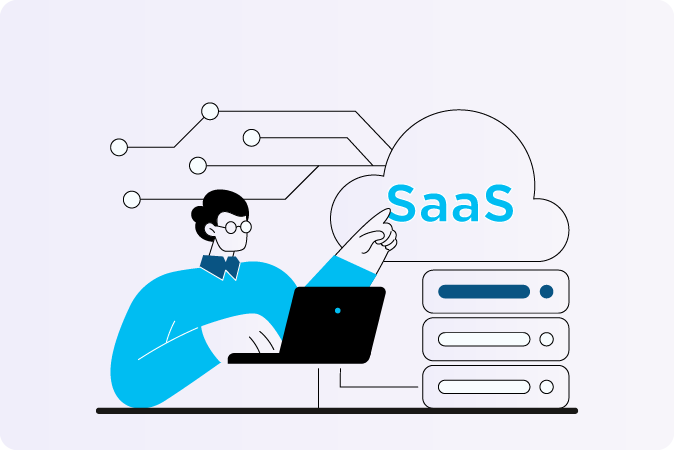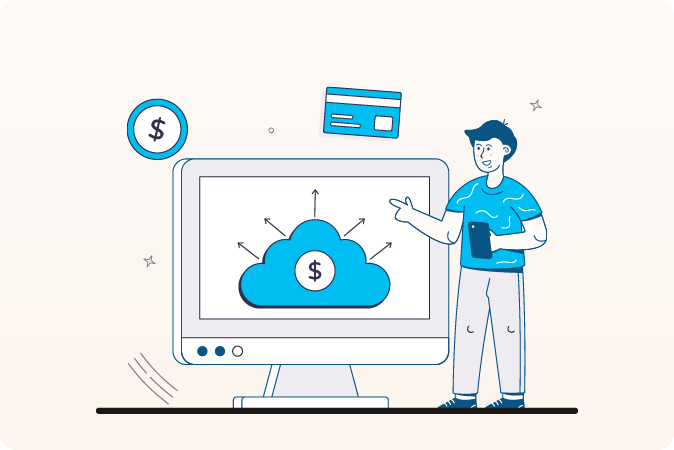
SaaS hidden costs are unexpected expenses that come with software subscriptions beyond the advertised price. Hidden costs can eat into your business funds and cause budget overruns.
In fact, many businesses find software investment inflation of around 30 to 50% annually due to undisclosed subscription charges.
If you’ve ever wondered, “What hidden costs should I watch out for with SaaS?” — this guide is for you. Keep reading to get direct, clear answers and practical strategies to control them.
The worldwide SaaS market is projected to exceed $300 billion in 2025. Businesses and companies of all sizes — from startups to enterprises — are using SaaS. It helps with HR workflows, CRM, project management, email marketing, and more. But when you don’t know the hidden costs, these tools can become more expensive than planned.
8 Common Hidden Costs in SaaS
Hidden costs often come from features, usage, and contract terms you may not notice upfront. Here are the most common SaaS hidden costs to watch for:
Over-licensing
Paying for user accounts that are inactive or underused. For example, a business may buy 100 licenses for a task management system, but only 70 users actively log in.
Storage Overages
Costs for exceeding data limits are particularly problematic with document management systems, HRMS software handling employee records, or CRM platforms storing customer data and communication histories.
Premium Feature Upgrades
The base plan of tools mostly contains access to basic features. Premium and essential tools like advanced reporting or automation features require additional integration charges for upgradation to a more premium plan.
API Call Charges
You might need to connect multiple business systems, like an employee monitoring platform with a project management module. These integrations require extra charges and may exceed monthly limits.
Integration Fees
Connecting SaaS tools with existing platforms or custom connector development requires additional investment.
Early Termination Penalties
When you opt for monthly or annual subscription models, contract cancellation charges may include only partial refunds or no refunds at all.
Onboarding & Training Costs
First-time consultation fees are free. However, migration service fees and post information implementation training are usually billed separately.
SaaS Hidden Costs vs. Transparent Pricing
| Factor | Hidden Costs Model | Transparent Pricing Model |
| Price Clarity | Low base price; extras not disclosed. | All costs listed upfront. |
| User Fees | Charges per extra user. | Clear per-user or unlimited pricing. |
| Integrations | API & tool links cost extra. | Included in plan. |
| Support | Paid premium for help. | Support included. |
| Data Limits | Storage/export fees apply. | Generous or unlimited storage. |
💡 Example:
WeekMate TaskHub includes task tracking, collaboration, and dashboards in one package without extra feature fees — a clear, transparent pricing model.
How to Audit SaaS Expenses? A Step-by-Step Guide
Implementing systematic SaaS cost management strategies requires a methodical approach to identifying and addressing expense inefficiencies:
Inventory All SaaS Tools
Create a complete list of every SaaS platform your company uses — from major tools like WeekMate HRMS to niche apps.
Check Usage Reports
Identify unused or low-use accounts and remove them. Many SaaS providers offer built-in reports.
Review Invoices
Look for extra charges such as data overages, premium add-ons, or service fees.
Compare Pricing Plans
You might be overpaying for features you don’t use. Sometimes switching to a smaller plan is more cost-effective.
Consolidate Vendors
If multiple SaaS tools overlap in function, replace them with an all-in-one alternative. For instance, WeekMate HRMS covers payroll, attendance, and performance — eliminating the need for three separate apps.
Top 6 Cost-Saving Tips for SaaS
Smart SaaS pricing tips can cut annual software costs without losing important features:
- Right-Size Licenses – Only pay for users who actually need access. Check regularly for inactive accounts. Remove licenses when employees leave or change roles. This simple step prevents wasted spending on unused seats.
- Negotiate Better Renewal Terms – Companies with good payment records often get discounts. Multi-year deals usually cost less per month. Mention competitor pricing during renewal talks. Vendors want to keep existing customers happy.
- Scalable Costs – Some platforms, like WeekMate, offer no per-user pricing model access instead of monthly fees. These eliminate recurring costs completely. The savings add up quickly over time.
- Choose Annual Payment Plans – Yearly payments typically save 10-20% compared to monthly billing. The upfront cost pays off through lower total expenses. Cash flow becomes more predictable, too.
- Set Up Usage Monitoring – Track how much each tool gets used. Built-in analytics show spending patterns. This prevents surprise overage charges. Early warnings help teams stay within budget limits.
- Bundle Services Together – Single platforms that handle multiple needs cost less than separate tools. Look for solutions combining project management, email marketing, and exam management features. Fewer vendors mean less complexity.
Regular planning and smart choices help businesses reduce SaaS costs while keeping operations running smoothly.
The WeekMate Advantage: Transparent Pricing, Hidden Cost Elimination
WeekMate suite shows how careful SaaS selection can reduce hidden costs:
- WeekMate HRMS – Combines attendance, payroll, leave management, and employee recognition in one platform — eliminating multiple tool subscriptions.
- WeekMate TaskHub – Provides team task management without costly per-user upgrades common in other project management tools.
- WeekMate e-CRM – Avoids integration chaos by providing built-in customer management tools instead of multiple disconnected platforms.
Conclusion
SaaS hidden costs can wreck budgets when businesses don’t plan for them. Companies that ignore these costs often face budget overruns. The money saved can fund growth instead of covering surprise bills.
FAQs
What hidden costs should I watch out for with SaaS?
SaaS platforms often have costs beyond the advertised price. Over-licensing happens when companies pay for unused accounts. Storage fees kick in when data limits are exceeded. Premium features cost extra on top of basic plans.
API calls can trigger additional charges. Integration with other tools may require paid connectors. Early contract termination usually comes with penalties. Training and setup often cost more than expected. These hidden expenses can boost total software costs by 30-50%.
How can I audit my SaaS expenses effectively?
Begin with a complete list of all software subscriptions. Check usage reports to spot inactive user accounts. Monthly invoices reveal surprise charges and add-ons.
Compare current plans with actual usage patterns. Many businesses pay for features they don’t use. Look for chances to combine tools. Platforms like WeekMate bundle multiple functions together. This reduces both complexity and costs.
What are the best tips for reducing SaaS costs?
Remove licenses for users who no longer need access. Annual payments usually offer better rates than monthly billing. Scalable pricing model eliminate recurring fees entirely.
Set up tracking to monitor usage patterns. This prevents overage charges. Negotiate better terms at renewal time. Companies with good payment history often get discounts. Consolidating vendors reduces management overhead and integration costs.
How do integrated SaaS suites help reduce hidden costs?
Single platforms handle multiple business needs. This eliminates fees for connecting separate tools. Vendor management becomes simpler with fewer contracts to track.
Pricing stays predictable across all functions. Training costs drop since teams learn one system instead of many. Support comes from a single source. WeekMate’s approach combines HR, CRM, project management, and marketing tools. This prevents the surprise costs that come with managing multiple vendors.
When should I consider switching from subscription to Scalable pricing model?
Teams with stable sizes benefit most from no per-user costs. Long-term software users save money over time. The break-even point usually hits within 2-3 years.
Calculate total subscription costs over expected usage time. Factor in price increases that typically happen with subscriptions. Flexible pricing model access protects against inflation and eliminates budget uncertainty.



